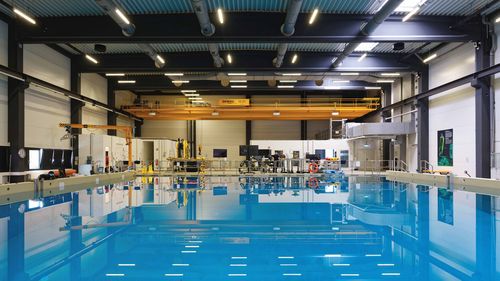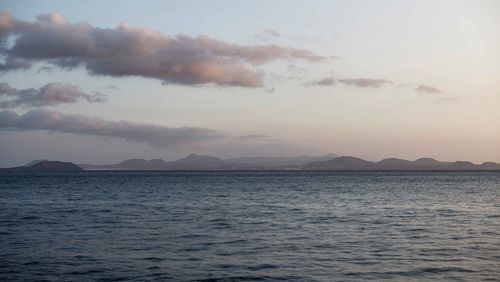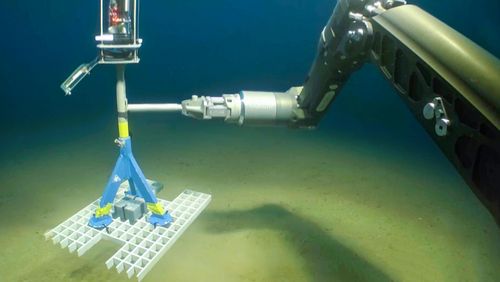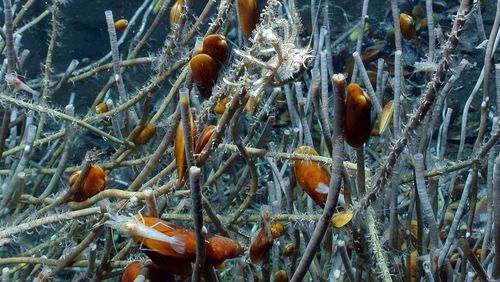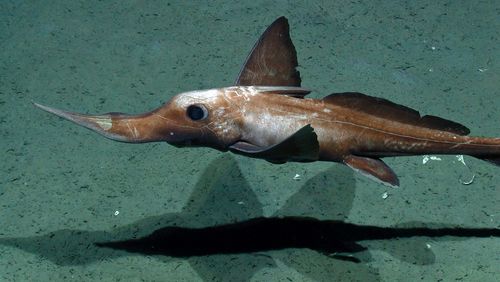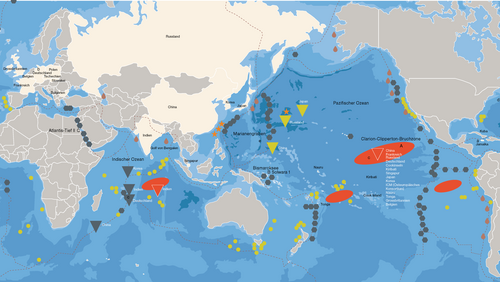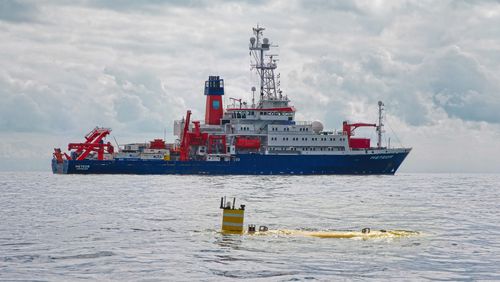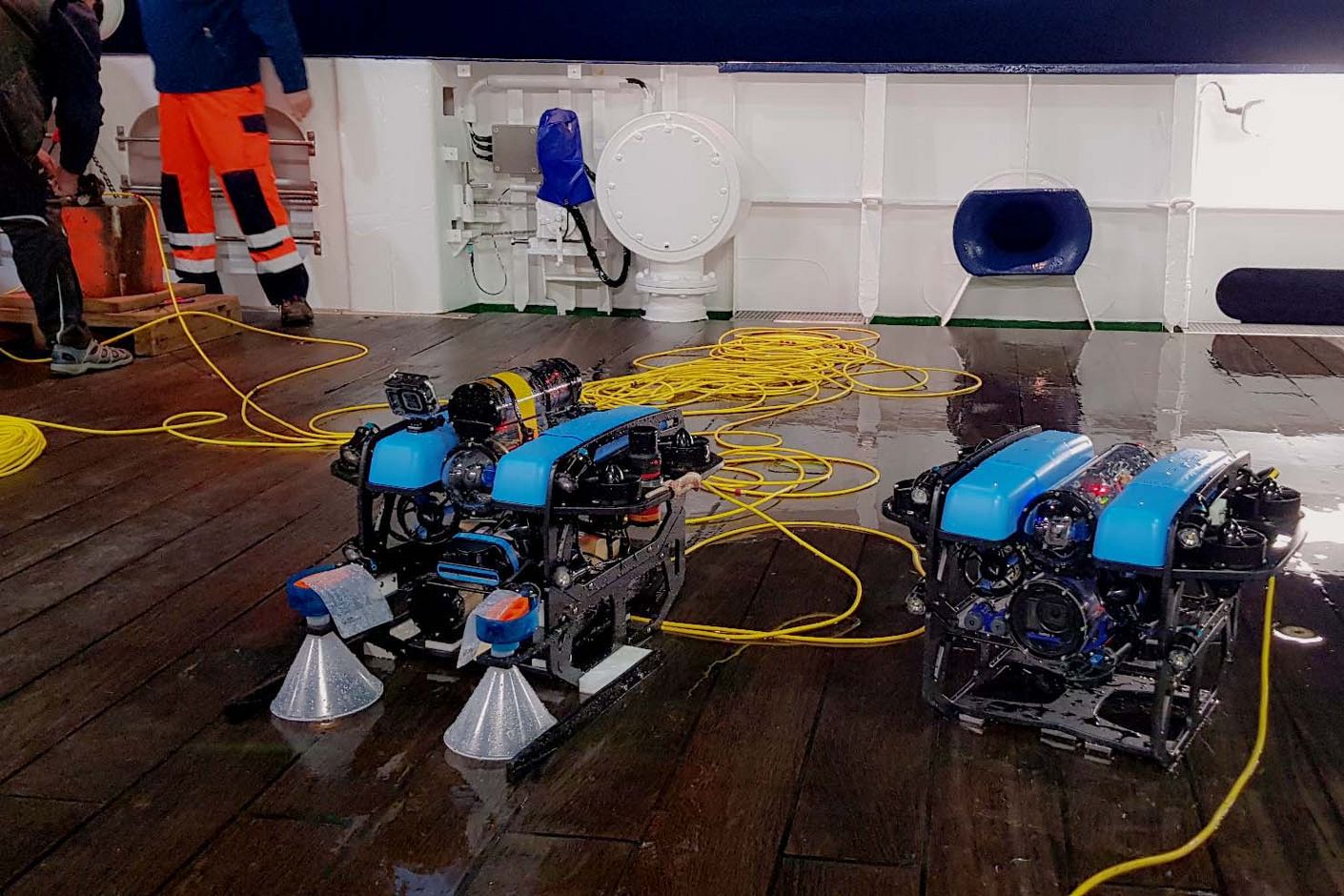
Gentle robots in rough waters
Should the delicate ecosystems in the ocean floor be disrupted by deep-sea mining, the consequences will be devastating. Now, researchers at the Innovation Center for Deep-Sea Environmental Monitoring in Bremen are developing underwater robots to identify and map ecologically valuable deep-sea regions. The team have made excellent progress: their robots are already capable of holding their ground, even in strong currents.
Smartphones, electric cars and solar panels require large quantities of minerals like copper, zinc and cobalt. Because on-land deposits are limited, an increasing number of countries and businesses are making plans to mine the ocean floor for valuable resources. But this kind of deep-sea mining would damage life in the seabed for decades to come.
Terra incognita
Before the ecologically valuable organisms of the deep sea can be protected, we must first know where they are located—yet the deep sea remains largely a terra incognita, unexplored territory. To remedy this, researchers at the Innovation Center for Deep-Sea Environmental Monitoring at MARUM of the University of Bremen are developing a novel system to map the ocean floor. Head of the centre is environmental technologist and Werner Siemens Foundation Endowed Chair Ralf Bachmayer.
An underwater dream team
Mapping the deep sea—what sounds simple is a highly complex job, which is why Bachmayer and his team are taking a multipronged approach. Two underwater robots move in tandem, just above the ocean floor. The remotely operated vehicle (ROV) that is higher up covers a broad swath of the seabed to provide researchers with a general overview. Then, a smaller, autonomous underwater vehicle (AUV) records this same section of the seabed in high-resolution detail. Together, the general overview and the details deliver a relatively exact picture of the ocean floor.
To be fully autonomous in its movements, the AUV—affectionately dubbed “Manatee” by the researchers—has to be able to navigate on its own. This is easier said than done at the bottom of the deep sea, where GPS is out of range and where the vehicle can very easily drift off course in the strong ocean currents. “This makes it critical that the AUV can maintain its position and orientation in the water,” says Bachmayer. To this end, he and his team developed a modular control system, which they then installed and tested on a miniature ROV.
North Sea as a proxy for the deep sea
The coronavirus pandemic prevented Bachmayer and his team from testing their device in the deep sea, as many research vessels were stuck in harbour for months. But the researchers were not to be deterred: “We teamed up with geologist Miriam Römer from the University of Bremen, who had planned an excursion to the North Sea.” Römer’s goal was to study how methane escapes the ocean floor of the North Sea.
The interdisciplinary group sailed from the port of Emden in northern Germany on 8 January 2021. They boarded the research vessel Maria S. Merian with the two miniature ROVs equipped with the new control system. The ROVs completed a total of twelve dives in the North Sea—surmounting the stormy winter weather and the dictates of the tides. During each roughly two-hour dive, Bachmayer and his team conducted detailed tests on the new control system.
Position held, gas trapped
The control system relies on sensors to detect depth, position and acceleration of the ROV. An algorithm then processes the signals to determine the ROV’s current orientation and direction. This information and the intended movement profile are delivered to the control system, which translates the data into steering signals for the vehicle’s propulsion drives. These signals enable the vehicle to auto-matically maintain its position and orientation in the water. “Our control system proved its mettle in the North Sea,” Bachmayer explains. “Now we can try it out in future tests with Manatee.”
The collaboration with Miriam Römer also had another, unexpected positive outcome. Bachmayer’s team created a device that helped the miniature ROV to collect gas samples—for example, the methane samples that Römer is interested in studying. In the past, larger vehicles were needed for this type of work, and the new device turned out to be an absolute innovation. “We were all beaming with satisfaction when we disembarked from this successful mission,” Bachmayer says.
An overcoat for Manatee
Back at the Innovation Center for Deep-Sea Environmental Monitoring in Bremen, the researchers constructed a thermoplastic outer shell to insulate the sensitive sensors and steering elements in the interior of AUV Manatee. The researchers have already calculated theoretical projections on how the newly encased Manatee will react in the water. Over the course of the coming year, they want to test the capabilities of the gentle robot in practice, this time in an open body of water like Lake Constance.
Text: Cornelia Eisenach
Photos: MARUM – Center for Marine Environmental Sciences
